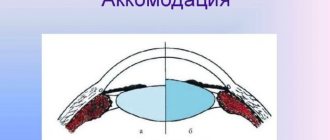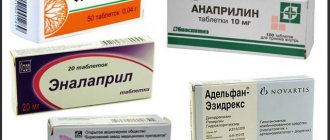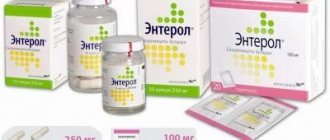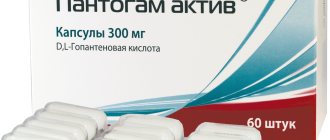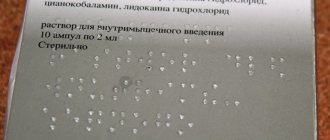According to statistics, perinatal pathologies of the central nervous system are diagnosed in approximately half of newborn babies. As such children grow older, problems with the brain transform into delayed physical and mental development, inappropriate behavior, and even cerebral palsy. Timely therapy helps the brain compensate for damage received during childbirth or during the prenatal period. One of the medications that helps children gain health is Cortexin.
- 2 Release forms and composition
- 3 Indications, contraindications and possible side effects
- 4 Instructions for use: how to dilute and inject Cortexin
- 5 How to replace Cortexin
5.1 Cortexin analogues - table
- 5.2 Other nootropic drugs for children - gallery
Effect of the drug
Cortexin is a nootropic consisting of neurotransmitters and polypeptides that have a beneficial effect on the cerebral cortex.
Cortexin is available separately for children and adults
This drug has the following effects on the body:
- Tissue-specific: Cortexin activates metabolism, thereby improving the activity of the central and peripheral nervous systems. Thanks to this, brain activity is stimulated and the nervous system as a whole is healed.
- Neuroprotective: the drug protects the brain from the influence of toxic substances, in particular psychotropics, calcium ions, free radicals, etc. At the same time, the brain becomes resistant to adverse external influences and begins to work much more productively.
- Antioxidant: the drug slows down and prevents lipid oxidation, resulting in more brain cells surviving when oxygen is deprived. At the same time, blood microcirculation improves and triglycerides and cholesterol levels are normalized.
- Nootropic: the drug stimulates brain activity, improving cognitive performance. As a result, patients develop stress resistance, memory improves, attentiveness increases and good learning ability appears.
- Anticonvulsant: thanks to Cortexin, an optimal ratio between inhibitory and excitatory amino acids is established in the human brain, and the amount of serotonin and dopamine returns to normal. This effect is achieved by normalizing the bioelectrical activity of brain neurons.
The package usually contains 10 bottles, which are just enough for 1 course
Actovegin, Cerebrolysin or Cortexin: which is better?
There is no clear answer to this question. Actovegin is often used in the treatment of neurological diseases together with Cortexin.
The drugs have similar clinical indications.
The difference is this:
- Cortexin is more effective in the treatment of dyscirculatory encephalopathy; the results of Actovegin in this case are weaker;
- Actovegin shows better results in the treatment of vegetative-vascular dystonia;
- Cortexin can be used from birth, it helps children with central nervous system injury, but the medicine is not recommended for pregnant and lactating women;
- Actovegin price is less.
Differences between Cerebrolysin and Cortexin
Although both medications are used to treat similar neurological pathologies, Cerebrolysin’s range of indications is somewhat wider and includes:
- dementia of the elderly;
- hyperactivity and increased excitability in children;
- ischemic attacks.
On the other hand, Cerebrolysin has a number of contraindications and side effects, while Cortexin is non-toxic and does not affect other organs.
There are many nootropic drugs available, but each of them has its own area of application and contraindications.
Before using the analogue, you should carefully study the instructions and consult a doctor.
Release forms and composition
Cortexin is available in powder form, from which an injection solution is prepared. One bottle may contain 5 or 10 mg of the active ingredient. For the treatment of children, a dosage of 5 mg is used. Each bottle contains 11 mg of medicinal substance: 5 mg of cortexin and 6 mg of glycine.
Attention! Cortexin is available only in the form of a lyophilized powder, from which an injection solution is prepared. Tablets and capsules with the same name are fake.
Externally, Cortexin is a white or yellowish powder, which is an extract made from the brain of calves and piglets. The molecules of these proteins are so small in length and mass that they can cross the blood-brain barrier and go straight into the human brain.
Method and features of application
The drug is available in the form of a lyophilisate for the preparation of a solution for intramuscular injection. Before administration, the lyophilisate is pre-prepared. To do this, you need to dissolve the dry powder from the bottle in one or two milliliters of 0.5 percent novocaine or a sterile type for injection.
The solvent is introduced into the bottle with the dry substance slowly so that foam does not appear. After the powder has completely dissolved, it is drawn up with a syringe. The solution should be homogeneous and transparent without lumps. For each injection, dilute all the dry powder in a bottle, but draw the required amount of medicine into a syringe (you cannot divide it into parts).
To avoid pain at the injection site, the medicine is administered as slowly as possible. Subsequent injections are placed one centimeter lower or higher than the previous placement. The dosage is individual for each child. The dose depends on the baby's body weight. The duration is ten days with an interval of three to six months.
The drug is administered daily once a day. The best time to give the injection is in the morning due to the fact that the medicine activates the central nervous system. After ten injections (ten days), you need to take a break of three months. If the drug is administered to adult patients, the injection is given twice a day (morning and afternoon).
Indications, contraindications and possible side effects
Cortexin can be used by patients of any age, even infants. It is actively prescribed for disorders of brain activity, in particular for the following pathologies:
- traumatic brain injuries;
- asthenic syndrome;
- neuroinfections of a viral or bacterial nature;
- inflammatory diseases of the brain and spinal cord;
- cerebrovascular accident;
- encephalopathy;
- hydrocephalic syndrome;
- epilepsy;
- syndrome of diffuse brain damage;
- cerebral autonomic disorders;
- cognitive impairment;
- delayed psychomotor and speech development;
- infantile cerebral palsy.
Cortexin is approved for use by children of any age, even infants and newborns; you should only give up the nootropic if you have allergies
In pediatric practice, Cortexin is often used to correct inappropriate behavior, as well as in cases of reduced learning ability, poor memory, and inattention. Neurologists note the high effectiveness of the drug for such problems as delayed speech development.
Cortexin is one of the most popular drugs in pediatric intensive care units: it is used to treat newborns with perinatal lesions of the central nervous system who are in critical condition.
As a rule, Cortexin is well tolerated by young patients. As side effects, allergic manifestations are possible in case of hypersensitivity to the components of the drug. Apart from individual intolerance, there are no restrictions on taking nootropics in pediatric practice.
Doctor Komarovsky about “memory medicine” - video
Cortexin for children has a variety of interactions with other drug groups. The medicine must not be mixed in the same syringe with other medicines. When prescribing several injections, the medicine is administered in different syringes. In other cases, the drug interacts well with various medications.
Indications for the use of Cortexin are the following diseases and conditions:
- cerebral palsy;
- epilepsy;
- cerebrovascular accident;
- cerebral autonomic disorders;
- inflammation of the spinal cord and brain;
- delayed speech and psychomotor development;
- diffuse brain damage syndrome;
- bacterial or viral infections affecting the brain;
- asthenic syndrome;
- encephalopathy;
- traumatic brain injuries;
- impairment of cognitive functions.
The advantages of using Cortexin are obvious: it is a fairly safe and effective drug, has a minimum of adverse reactions and is approved for use from the first days of babies’ lives. The course of treatment allows you to improve the child’s speech, memory and thinking, accelerate the development of motor functions and achieve stabilization of behavior. However, nootropic therapy must be carried out under the supervision of a physician.
Indications for use of the drug are:
- infectious diseases of the nervous system caused by bacteria or viruses;
- conditions accompanied by circulatory disorders in the brain;
- TBI and its consequences;
- syndrome of diffuse brain damage of various origins;
- cerebral (suprasegmental) autonomic disorders.
In combination with other drugs, the drug is prescribed for the treatment of epilepsy, as well as for the treatment of acute and chronic inflammatory diseases of the brain and/or spinal cord of various etiologies.
For children, indications for the use of Cortexin are reduced learning ability, memory and thinking disorders, psychomotor and speech development delay syndrome in children (CPRD), various forms of cerebral palsy.
The drug is incompatible with drugs that have a peptide structure.
Instructions for use: how to dilute and inject Cortexin
Before using a nootropic, a competent neurologist must prescribe an electroencephalogram for a small patient - a study of the electrical activity of neurons in the brain. If it shows the presence of epiactivity, you should not inject Cortexin, since in this case you can only harm the brain.
The solution for injection is prepared as follows:
- Draw 1–2 ml of water for injection or isotonic sodium chloride solution (saline) into a sterile syringe.
- Use a syringe needle to pierce the rubber stopper of the Cortexin bottle and pour liquid into it. To avoid the formation of foam, the needle is directed towards the wall.
- The contents of the bottle are gently shaken until the powder is completely dissolved.
- The required amount of solution is drawn into the syringe, and the needle used to pierce the bottle is replaced with a new one.
- The drug is injected very slowly because too fast an injection causes pain.
Sometimes doctors recommend reducing the pain of the injection by diluting the powder not with saline solution, but with novocaine (0.5%). This method can only be used if there is firm confidence in the absence of side effects. Since novocaine often provokes severe allergic reactions and even seizures in children, many pediatricians do not approve of diluting Cortexin with this drug.
The diluted solution should be used immediately. If it has stood for more than half an hour, it is better to pour it out and prepare a fresh portion of the medicine.
Cortexin must first be diluted with saline or water for injection.
As a rule, injections are given in the buttock, but for babies under six months it is better to place them in the front surface of the thigh. Otherwise, there is a high probability of damage to the sciatic nerve. In this case, each subsequent injection must be at a distance of at least 1 cm from the site of the previous injection of the medicine.
Attention! Like all nootropics, Cortexin can cause severe agitation and difficulty sleeping at night, so injections should be done before 13:00.
The dosage of the drug is calculated based on the child’s body weight. The course of treatment usually includes 10 daily injections, and the medication can be reused after 3-6 months. If your baby has mild cold symptoms, you are allowed to continue giving injections.
If the temperature is very high and your general health is poor, therapy should be stopped. The final decision on canceling or extending the course should be made by the doctor.
How to choose the right solvent for Cortexin?
In general, if you want the solution to be chosen correctly, you should trust your doctor. If the child is not yet one year old, then parents need to contact a pediatrician, since not all medications can be injected into infants. Usually water for injection or saline is used.
For adults, the drug can be diluted with Novocaine - this product has a mild analgesic effect and is also ideal as a solvent.
The price of all solvents is low, you can choose the most optimal option. If you want to know how to properly inject Cortexin and what solvents to mix it with, it is best to consult a doctor. It would be even better to come to the clinic; experienced medical workers will do the procedure perfectly: safely and painlessly.
How to replace Cortexin
There are no exact analogues of Cortexin based on the active substance, but there are many nootropic drugs with a similar effect on the brain.
Under no circumstances should you independently replace Cortexin prescribed by your doctor with other drugs, even if they are cheaper and more accessible. Only a specialist can do this.
Cortexin analogues - table
| Drug name | Release form | Active substance | Indications | Contraindications | Minimum age of child |
| Aminalon | pills | gamma-aminobutyric acid |
|
| 5 years |
| Glycine | pills | glycine |
| hypersensitivity to the components of the drug | 3 years |
| Calcium hopantenate | pills | calcium hopantenate |
|
| from birth |
| Nootropil |
| piracetam |
|
|
|
| Pantogam |
| pantogam |
|
|
|
| Pantocalcin | pills | hopantenic acid |
|
| 3 years |
| Cerakson |
| cytocoline |
|
|
|
| Cerebrolysin | injection | Cerebrolysin (peptides derived from pig brain) |
|
| 6 months |
Other nootropic drugs for children - gallery
Cerakson
Pantocalcin
Nootropil
Calcium hopantenate
Aminalon
Pantogam
Glycine
Cerebrolysin
Analogs
Cortexin is a mixed-action nootropic drug with a wide range of effects (neuroprotector). Drug correction using drugs of this group is one of the leading directions in the treatment of the consequences of cerebrovascular accidents in children.
In pediatric practice, the following drugs are used for this purpose: Actovegin, Aminalon (Gammalon), Biotredin, Vasobral, Gliatilin (Cerepro), Glycine, Dimephosphon (from 12 years), Instenon, Cogitum (from 7 years), Cortexin, Kudesan (after 1 years with caution), Minisem (from three months), Noben, Pantogam (syrup from birth), Picamilon, Piracetam, Semax (from 5 years), Tenoten for children (from 3 years), Phenibut (from 2 years), Cerebrolysin, Cinnarizine (from 12 years old), Encephabol (suspension).
Due to the lack of clinical trials in pediatrics, within the same international nonproprietary name (INN) of a drug there may be trade names that are approved and not approved for use in children.
There is also a list of the most popular drugs, widely prescribed by neurologists in pediatric practice, which do not have special permission for use in children and are used in violation of the age indications specified in the instructions for use. These are Akatinol memantine, Caviton, Mexidol, Mildronate, Milgamma, Noopept, Sermion, Tanakan, Phenotropil, Ceraxon, Cerebrum-comprozitum, Cereton.
The largest evidence base of clinical studies among neurotrophic drugs in adults are hopantenic acid (Pantogam), Nooclerin, Tenoten for children, Actovegin, Cerebrolysin, Cortexin. These drugs are approved for use in neuropediatrics.
Attention! The description of the drug is a simplified and expanded version of the official instructions for use. Information about the drug is provided for informational purposes only and should not be used as a guide to self-medication.
| International nonproprietary name | Trade name of the drug | Price | Release form | Manufacturer |
| No | Cortexin | 734 rub. | Lyophilized powder for injection 5 mg, 10 bottles | Russia |
| Cortexin | 1200 rub. | Lyophilized powder for injection 10 mg, 10 bottles | ||
| D,L-hopantenic acid | Pantogam | 363 rub. | Syrup 10%, 100 ml | Russia |
| Deanol aceglumate | Nooclerin | 397 rub. | Oral solution 20%, 100 ml | Russia |
| D | Tenoten for children | 215 rub. | Lozenges, 40 pieces | Russia |
| Actovegin | 230 rub. | Solution for injection 40 mg, 2 ml in ampoule, 5 ampoules | Austria | |
| Cerebrolysin | RUB 994.50 | Solution for injection, 2 ml in ampoule, 10 ampoules | Austria |
There are no complete analogues of Cortexin for children on sale; there are only its substitutes that have a similar effect:
- Cerebrolysin;
- Encephabol;
- Piracetam;
- Pantogam.
Cortexin for children has no absolute analogues.
Doctors' opinions and parents' reviews
Reviews from doctors and patients about Cortexin are very mixed. Most doctors view the drug favorably, noting its high effectiveness and good tolerability. However, there are specialists who try not to use this nootropic in their practice, because they consider its effectiveness unproven and its price unreasonably high.
Feedback from parents is distributed in a similar way: many mothers are delighted with Cortexin, seeing how, after a course of treatment, their children begin to develop physically and speak, but there are also negative experiences with using the drug.
3 days passed after using the “talkers”, and I began to notice a slight rash, the injections were stopped, but the rash got worse, and later the diagnosis was disappointing - atopic dermatitis. In general, the solution is very good, and the packaging is convenient - special disposable bottles, and, by the way, the child’s condition has become much better. And the most significant advantage is that even without completing the entire course of treatment, what would you think? A week after the injections, my son began to talk more and more, it’s not for nothing that they call Cortexin for children - talkers! And the baby has an excellent memory - he retells and remembers everything the first time!
Irinchik
https://otzovik.com/review_50575.html
When the child was three years old, we went to see a wonderful neuropsychiatrist who looked at all the studies, the drugs prescribed before, and prescribed 10 ml of Cortexin to be injected every day, diluted with lidocaine. So, 10 injections were given every day. But all the torment and pain were worth it!!! A month later, my son began to speak a little!!! If before this he had 5–8 understandable words plus onomatopoeia in his active vocabulary, there was no talk of sentences at all, the child began to say more and more words every week.
Margo44
https://otzovik.com/review_690730.html
This drug was prescribed to us by a neurologist. My son is 3 years and 3 months old, but he hardly speaks, eats poorly, and develops slowly. Of course, I feel sorry for the child. He is crying. But we liked the result. It is clear that the child does not tell us poetry. But he began to fall asleep better during the day, became more attentive, looks with interest, studies, tries to repeat words and actions. He couldn't do it before.
Leaf
https://otzovik.com/review_603261.html
My son was prescribed Cortexin at the age of 1 year. Diagnosis: delayed speech development. Completed the course - 10 injections. I won’t tell you how the child cried in front of the door of the treatment room, starting from the second visit, it’s easy to imagine. The result is zero. There were no changes. When I asked the neurologist the question “why?”, they explained to me that neurology cannot be treated so quickly, that we give injections now, and we will see the result in at least 2 weeks, or even in a month. We waited - there was no result.
altai2002
https://otzovik.com/review_92696.html
After the injections, the son began to behave even worse, all his rocking only intensified. The child became aggressive, nervous, just a little devil. As soon as the effect of the drug came to an end, the child calmed down and became the same again. This pattern continued throughout the course of treatment. The doctor said this happens and will soon return to normal. But after taking it and even after a while there are no changes. Everything became the same as it was, perhaps even worse.
Yankovskaya Sasha
https://otzovik.com/review_2395824.html
My son was prescribed Cortexin by his neurologist at the age of 8 months. The child has delayed motor development, according to the doctor, and nothing more!!! The child does not sit independently, only with support. And he sits when he was imprisoned. And he doesn’t crawl, he just lies on his tummy. AFTER A WEEK of using Cortexin, the child began to have CONVISIONS!!! I threw these injections away immediately! And I advise you: NEVER BUY!!!
Anonymous176815
https://otzovik.com/review_539426.html
We placed it at 2 months. simultaneously with massage and Phenibut. Helped us a lot! At four months We saw a neurologist and he said everything was fine. We had intracranial pressure due to fetal hypoxia (the baby was premature) and a small cyst. Now everything is normal! The injections were painful, but my son cried very little and quickly calmed down. The massage therapist herself gave us insulin syringes, they are small, just right for a baby.
MariMarka
https://38mama.ru/forum/index.php?topic=62424.0
Thus, we can conclude that Cortexin helps many children, even despite the stress from painful injections. However, the use of any medicine always carries the risk of adverse reactions, and in some children they can be quite pronounced, even leading to the appearance of seizures.
Patient reviews after use
Natalya, 38 years old:
I have low blood pressure and also suffer from dizziness and headaches. A neurologist prescribed Cortexin injections for me in the spring.
After them, my head seemed to clear up and I began to feel much better. The dizziness went away completely, although I still had a headache once a month
. And at work I became calmer, less irritated.
Irina, 25 years old:
My son is already 4 years old, and he still doesn’t speak. She took me to neurologists and showed her to a psychiatrist
. Doctors say that there are no deviations in his health. Then suddenly a diagnosis: delayed speech development.
I read reviews on the Internet about the drug Cortexin and decided to try it. I consulted with a neurologist, the doctor gave the go-ahead.
After a 10-day course, there were positive changes. No, the child did not immediately start speaking in sentences
.
But instead of mooing, I suddenly heard the words “give”, “drink” and others
. It is clear that not everything works out for my boy, but he has a great desire to talk.
Cortexin, injections - indications for use
Cortexin is available in powder form for preparing a solution. The lyophilisate is placed in small 5 ml bottles, which are packaged in boxes
.
The active substance itself is a dried extract of protein fractions that are isolated from the cerebral cortex of pigs and cattle
. This peptide extract itself is the active component of the drug Cortexin for injection. Each bottle contains 10 mg of active ingredient.
In most cases, the drug is used as part of complex therapy. How often you can inject Cortexin is determined by your doctor. Talking about why Cortexin injections are prescribed, listing the indications for using the medicine, the following are highlighted:
- cerebrovascular accident;
- consequences of TBI;
- cognitive impairment (disorders of thinking, memory, attention);
- acute and chronic encephalitis;
- epilepsy;
- vegetative-vascular dystonia;
- decreased muscle tone;
- delayed psychomotor development of the child;
- critical conditions of newborns;
- cerebral palsy;
- asthenia.
Cortexin for epilepsy
Cortexin injections are often used in the treatment of epilepsy. This drug helps reduce the frequency of epileptic seizures and improves the patient’s overall well-being.
.
This is achieved due to the fact that Cortexin has a pronounced anticonvulsant effect
. By suppressing the activity of the pathological focus localized in the brain, the drug helps reduce the number of convulsive muscle contractions.
This action itself explains why Cortexin injections are prescribed to patients. Dosage and frequency of administration are determined individually
. As part of complex therapy, the drug is used more often in a dosage of 10 mg per day, administered intramuscularly. For frequent seizures, the dose of the medicine is increased.
Cortexin for stroke
With timely and correct use of the drug Cortexin, the drug helps to quickly restore the body after a stroke. This medication has a pronounced neuroprotective effect
.
Peptides are highly effective even in low concentrations
.
Under their influence, neurons and neurotrophic factors in the brain are activated. A balance is observed between the concentrations of excitatory and inhibitory amino acids, serotonin and dopamine
. For extensive ischemic lesions, 20 mg of Cortexin is administered per day for 10 days.
Cortexin for multiple sclerosis
For many patients, the drug is known as injections for memory: Cortexin accelerates cerebral circulation, resulting in improved cognitive processes (thinking, memory). Considering this property of the drug, doctors prescribe Cortexin for multiple sclerosis
. This disease requires complex therapy, which requires the following tasks:
- relief of the inflammatory process;
- reducing the rate of neurodegeneration;
- restoration of nervous system functions.
Cortexin is used in the complex therapy of multiple sclerosis at the stage of prolonging remission. Correctly selected dosage of medication effectively reduces the risk of exacerbation
. To maintain brain functions, normalize thinking and memory, Cortexin is prescribed 10 mg per day. The duration of therapy is determined individually.
Cortexin for hypotension
Cortexin injections are also used in pediatric practice. Doctors often prescribe the drug to children with decreased muscle tone. Such babies have problems with support (get to their feet late) and cannot roll over on their own.
.
Many young patients with a similar problem cannot lift their heads well or cannot lift them at all
.
These symptoms are direct evidence of muscle hypotonicity
. To correct the situation, doctors prescribe a course of Cortexin.
Speaking about why Cortexin injections are prescribed for decreased tone, doctors point to its stimulating effect - it increases motor activity by affecting the corresponding parts of the brain. The drug is used with caution, since incorrect dosage calculation can cause constant anxiety in the child, hyperactivity syndrome
. Dosages are set individually. In this case, the baby’s weight is taken into account:
- up to 20 kg – 0.5 mg of the drug per kilogram;
- for body weight more than 20 kg - 10 mg per day.
Cortexin for VSD
Vegetative-vascular dystonia is characterized by many disorders. The pathology affects several systems simultaneously, so patients may complain of pain in the heart, a constant feeling of anxiety, worry, increased heart rate, increased pulse
.
Headaches in pathology also occur and are associated with impaired microcirculation in the brain
. The drug Cortexin helps get rid of these manifestations of VSD. It acts simultaneously in four directions:
- Improves brain function - increases concentration, strengthens memory, increases stress resistance.
- Protects nerve cells from harmful effects.
- Increases the supply of oxygen to cells of the nervous system and brain.
- Slows down lipid oxidation processes.
These therapeutic effects are the answer to the question of why Cortexin injections are prescribed for VSD. The dosage is determined by the doctor individually. The specialist determines how to inject Cortexin, taking into account the patient’s condition, stage and severity of the pathological process
.
The duration of therapy is determined based on the results of an interim study, which is carried out upon completion of the course
.
10 mg of the drug is prescribed intramuscularly per day
. Cortexin is not prescribed during pregnancy for VSD.
Cortexin for parkinsonism
Parkinsonism is a disease accompanied by increased muscle contractility, which leads to the development of spasm and paralysis. The patient's movements slow down, become stiff, and the muscles become very tense, causing the arms and legs to shake violently and uncontrollably.
.
However, in 25%, jitter may not be observed. The symptoms that appear resemble those changes that come with old age
. As the disease progresses, a person may lose balance and simply freeze in place when walking.
It is impossible to cure the disease, so therapeutic measures are aimed at improving the general condition of the patient. For this purpose, doctors use Cortexin injections for adults as part of complex treatment.
. The need for use, dosage and frequency of use are determined individually. As a maintenance dosage, 10 mg of the drug is administered every day.
Cortexin for migraines
The indications for use of the drug do not include migraine. However, in some cases, doctors use Cortexin for headaches. This drug helps to quickly stop a migraine attack
.
This effect is due to the ability of the drug to influence the pathophysiological mechanisms of migraine
.
This is achieved by normalizing the ratio of the levels of amino acids, dopamine and serotonin
. After use, patients note improved well-being and a decrease in the number of migraine attacks. To relieve an attack, use an increased dosage of the drug (15–20 mg).
Cortexin - injections for ZRR
Speech impairment in children is a sign of pathological changes in the brain. If a child by the age of three pronounces a few simple words and is not able to construct a simple sentence, it is necessary to contact a specialist. Neurologists often prescribe Cortexin: when speech is delayed, the drug helps stimulate brain structures and improves microcirculation.
The need to use the drug is determined by the doctor. There is a direct relationship between the duration of the course of therapy and the severity of the pathological process
.
Cortexin for FGR is prescribed in courses as part of complex therapy
. The daily dose should not exceed 10 mg. After a break, the course can be re-assigned.
Cortexin for neuroses
The instructions that accompany Cortexin (injections - what they are used for, indications) also indicate neurotic disorders. The nature of the cause that caused the disease is important. When neurosis develops against the background of constant stressful situations, overwork, drugs that improve blood supply and metabolic processes in the brain are effective
. These include Cortexin.
By stimulating proper brain function by improving blood circulation, the drug significantly improves the overall well-being of patients. This is the main explanation for why Cortexin injections are prescribed for neurosis
.
The course of therapy is selected individually, taking into account the stage and type of pathology, and the patient’s age. For adults, doctors prescribe 10 mg of Cortexin per day, a course of 10 days
. At the same time, to achieve the fastest effect, physiotherapy is carried out:
- electrophoresis:
- acupuncture.
Cortexin for hydrocephalus
The drug is effective for cerebral edema. A similar pathology occurs in both adults and children (consequences of birth trauma)
.
Of particular concern to doctors is hydrocephalus in newborns
.
This disease is accompanied by a malfunction of the internal organs, which can lead to the death of the baby
. Due to the accumulation of fluid, compression of the brain is observed, disrupting normal blood supply. As a result, impaired motor activity and problems with eating are observed (the sucking reflex is undeveloped).
Cortexin helps correct the situation. The drug restores cerebral circulation, activating its work. In addition, the medicine reduces swelling
.
All appointments are made by a doctor
.
Only he knows how to inject Cortexin correctly and what dosages to use
. For children, the dosage is calculated according to the baby’s body weight:
- 0.5 mg per kilogram of weight;
- Children weighing more than 20 kg and adults are administered 10 mg of medication per day.
Cortexin for cerebral palsy
The benefits of Cortexin injections have been proven in the treatment of cerebral palsy. The term “cerebral palsy” refers to a group of disorders associated with damage or abnormality of the brain
. This leads to disruption of the musculoskeletal system. With severe disorders, complete muscle paralysis is possible.
Therapy for cerebral palsy is carried out comprehensively and is aimed at improving the general well-being of the patient and alleviating his suffering. Cortexin is used to restore normal brain function.
. Rehabilitation is carried out in courses of 10 injections, which are repeated at intervals of approximately 6 months.

